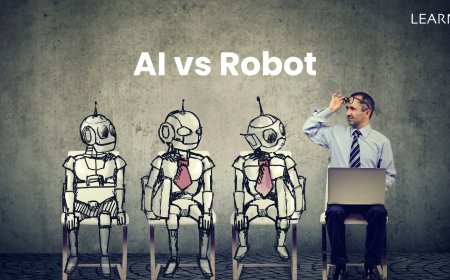In the world of building software, there's this thing called "full-stack development." It's basically about having all the skills needed to create modern web apps. Full-stack developers know both the front-end stuff (how things look and work on a website) and the back-end stuff (what happens behind the scenes to make a website work). Imagine full-stack development as being like a person who can do everything from designing how a website looks to make sure it runs smoothly on the internet. It's like being a jack-of-all-trades in the world of web development.
To be a full-stack developer, you need to know different computer languages like HTML, CSS, and JavaScript for the front end, and other languages like Python, Ruby, or Java for the back end. You also need to understand databases, how servers work, and how to keep track of changes in the code. Full-stack development has become important because there's a big need for people who can do both the design part and the technical part of making websites. It's like being a bridge between the design team and the technical team, making sure everything fits together smoothly. Being a full-stack developer means always learning new things because technology changes. This approach helps developers stay creative and come up with new solutions to problems. In this article, we're going to talk more about full-stack development, what it involves, and why it's so important in today's world of building websites. We'll break down the different parts of full-stack development and look at some real examples to help you understand it better.
Exploring Web Development: From Coding to Responsive Design
In technology, web development is all about creating websites. It's like putting together pieces of a puzzle to make something people can see and use on the internet. There are two main parts to it:
1. Front-end development: This is what users see and interact with on a website. It's like the storefront of an online shop.
2. Back-end development: This part is like the engine of a car. It makes everything work behind the scenes, handling things like storing data and processing requests.
The most important thing in web development is coding. Think of coding like writing instructions for a computer. Web developers use languages like HTML, CSS, and JavaScript to tell the computer what the website should look like and how it should behave. One big challenge in web development is making sure websites look good and work well on all kinds of devices, like phones, tablets, and computers. This is called responsive design. It's like making clothes that fit people of all sizes. Web development involves lots of different tasks, like creating new websites, fixing problems, and making sure everything runs smoothly. It's like taking care of a garden to keep it looking nice and healthy. To be successful in web development, you have to keep learning and adapting because things are always changing. New tools and ways of doing things are always popping up, so it's important to stay up-to-date.
Connecting Front-end and Back-end: Solving Common Problems
When we build websites, there are two important parts: the front end (what you see and interact with) and the back end (the behind-the-scenes stuff). Making sure these two parts work well together can be tricky, but there are solutions to the challenges:
1. Talking to Each Other: Sometimes, front-end and back-end developers don't understand each other's work, which can cause problems. To fix this, they need to communicate better. They can have meetings, write things down, and use tools to keep track of what needs to be done.
2. Keeping Data in Sync: The information on the front-end and back-end should match up, but sometimes changes aren't reflected properly. To solve this, developers can use tools to make sure the data stays consistent. These tools help manage and synchronize information between the two parts of the website.
3. Making Things Faster: Websites need to be quick and responsive. But when dealing with lots of data and complex designs, it can be hard to keep things speedy. To improve performance, developers can use techniques like loading things only when needed, storing information temporarily, and making sure the server does some of the work.
4. Staying Safe: When front-end and back-end systems connect, there's a risk of security problems. If one part gets hacked, it can cause big problems for the whole website. To prevent this, developers need to build safeguards like checking the information users input, encrypting sensitive data, and controlling who can access what. They also need to regularly check for and fix any vulnerabilities.
By addressing these issues and working together, developers can make sure the front-end and back-end of a website work well together, creating a better experience for users.
Why Choose Full-Stack Development?
Full-stack development has some pretty good perks that make it a solid choice for developers. First off, it lets developers work on both the front-end and back-end of a project, so they get the whole picture of how everything fits together. This means they can create smooth and complete solutions that do everything they need to. Plus, full-stack developers are like all-around players – they can handle lots of different tasks and technologies. That makes them super valuable in the job market because they can jump into different projects and teams without missing a beat. Also, full-stack development makes things run smoother by keeping everyone on the same page. Instead of the front-end and back-end teams having to constantly talk to each other, one person can handle it all. So, going for full-stack development gives developers a great mix of skills, opens up more job opportunities, and helps them deliver top-notch solutions from start to finish.
The Strength of Full-Stack Development
In the exciting world of web development, Full-Stack Development has become important. It's like having all the tools in one box to make strong and flexible applications. This blog will talk about why Full-Stack Development is so powerful, focusing on how it combines the frontend and backend, its architecture, and how developers deploy and host applications.
Combining Frontend and Backend:
One cool thing about Full-Stack Development is how it brings together the frontend and backend parts of an application. This means everything looks and works smoothly for users. Developers use tools like React or Angular for the part you see (the front end) and things like Node.js or Django for the part you don't see (the backend). This combination lets developers create apps that work well and feel fast.
Building Application Architecture:
Full-stack development lets developers build strong structures for applications. Since they can work on both sides (client and server), they can make designs that are easy to understand and change. This makes it easier to add new stuff, fix problems, and adapt to what users need. Developers can also pick different ways to structure their apps, like MVC or MVVM, depending on what works best for each project.
Deploying and Hosting:
Once an app is ready, it needs to be put online for people to use. Full-Stack Developers know how to do this part well. They can put the part you see online using platforms like Netlify or Vercel, and they can set up servers for the part you don't see using services like AWS, Azure, or Google Cloud. This makes sure the app works fast, can handle lots of users, and is available to people all over the world.
In simple terms, full-stack development is like being a jack-of-all-trades in the software world. It means you're skilled in both building what users see (the front-end) and making sure everything works smoothly behind the scenes (the back-end). People who do this are good at using lots of different technologies to solve problems. Think of full-stack developers as problem-solvers who can handle all aspects of creating a digital product or service. They're not just good at coding; they also have a way of thinking that's all about being creative and able to adapt to new challenges. In today's tech-focused world, where software must work seamlessly and be easy for users to understand, full-stack development is super important. It's like having the key to making sure everything in the digital world runs smoothly, helping developers build great products from start to finish.




































